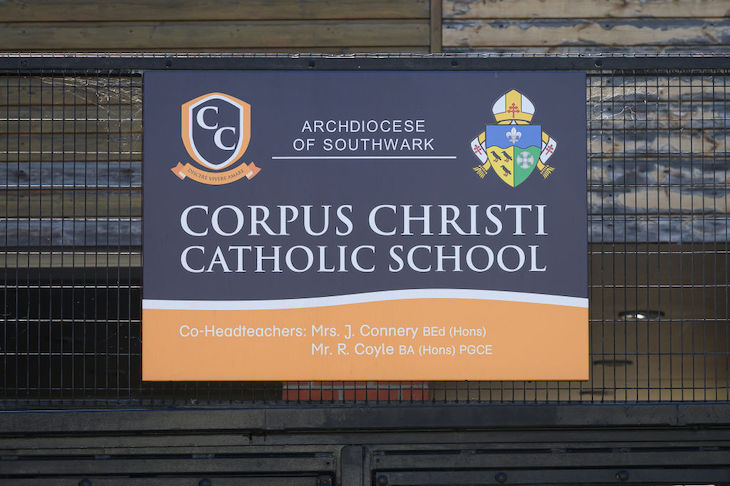We now know the names of the 156 schools across the country with crumbling reinforced autoclaved aerated concrete (Raac) inside their buildings, resulting in partial or full closure for 104 of those listed. What struck me as I glanced down the list of schools is the frequency of the word ‘Saint’ which, more often than not, means that the school in question is Catholic. A quick count showed that 30 Catholic schools are listed in total — which amounts to about a fifth of schools affected. Given that only 9 per cent of state funded schools and academies in the UK are Catholic, that seems alarmingly high and begs the question: why?
Well, the clearest answer is timing. The use of Raac was most prevalent between the 1950s and 1970s, which coincided with a time of rapid demographic change, particularly for the Catholic Church across the UK.
A large number of Catholic-school pupils might have to pay a heavy price
In his book, The Oxford History of British and Irish Catholicism, Professor Stephen Bullivant identifies two significant developments during this period; the Catholic Church’s ‘exceptional growth’ due to post-war immigration and the boom in the building of Catholic schools and churches during the 50s and 60s. He told me:
‘Thanks both to an (even) higher-than-average birthrate, and hundreds of thousands of Catholic immigrants from (inter alia) Ireland, Poland, Italy, Ukraine, the Church did an awful lot of building in the fifties and sixties. There were perhaps 600 new Catholic churches in England and Wales built in the 1960s alone. And of course, each parish needed a school. (In fact, the school often came first; the sports hall then serving as a makeshift chapel while the church was built.) And as any connoisseur of modern Catholic architecture will be aware, concrete was very much in vogue.’
Another factor is money. Raac was used because it is a cheaper type of concrete. At that time, when the Catholic Church was building so many schools, the costs were split between local authorities and the Church; the former covered 90 per cent of capital finance and the latter covering the remainder, as a price for their religious autonomy.
It is easy to see how both church and state will have been eager to keep costs low, especially given the high demand for schools at the time, with the Catholic Church relying on the generosity of its members, adding an even heavier obligation to minimise cost.
Unfortunate timing, financial limitations and the strong pressure on the Catholic Church to maintain its historic contribution to national education are the reasons given by the Catholic Education Service for England and Wales (CESEW) on the Raac scandal, too.
A spokesperson for the CESEW told me:
‘The 1944 Education Act established universal secondary education, which saw a significant increase in secondary school construction and coincided with the RAAC era. This coordinated approach saw the Catholic Church become the biggest provider of secondary schools in the country, more so than the Church of England, for example. Furthermore, Catholic dioceses are much larger than counties. Instead of multiple councils using different contractors with varying budgets, diocesan procurement frameworks meant a smaller number of contractors, eg the same architect was used for some schools in the north east.’
In other words, construction decision making was centralised under the authority of various bishops: the same diocese might typically use the same architects and construction companies to build Catholic schools. The CES’s emphasis on the size of dioceses along with their propensity to coordinate also makes one wonder whether the response rate to the Government’s Raac survey was generally higher among Catholic schools, compared with other schools’, due to being diocesan-led.
The months ahead may shed some further light on this particular question. But what we know so far suggests that, in its efforts to meet post-war educational demands, the Catholic Church, while trying to keep costs low, might now mean a large number of Catholic-school pupils have to pay a heavy price.
An uncomfortable question for Catholics also remains: if a high proportion of Catholic schools are known to contain Raac, does this suggest that their post-war church buildings may be compromised too? The Catholic Church in England and Wales have not been particularly rich for centuries, now. Many parishes are closing, often due to priest shortages and low attendance — even if, on that score, Catholicism is considerably less compromised these days than the Church of England. For the Catholic Church, as well the government, the Raac scandal could prove very expensive indeed.
No doubt many ardent secularists, who loathe the idea of religious education, will be delighted to see Church schools suffer. But the government ought still to recognise the extraordinary contribution Catholicism has made to British education, especially since the the Second World War.






Comments